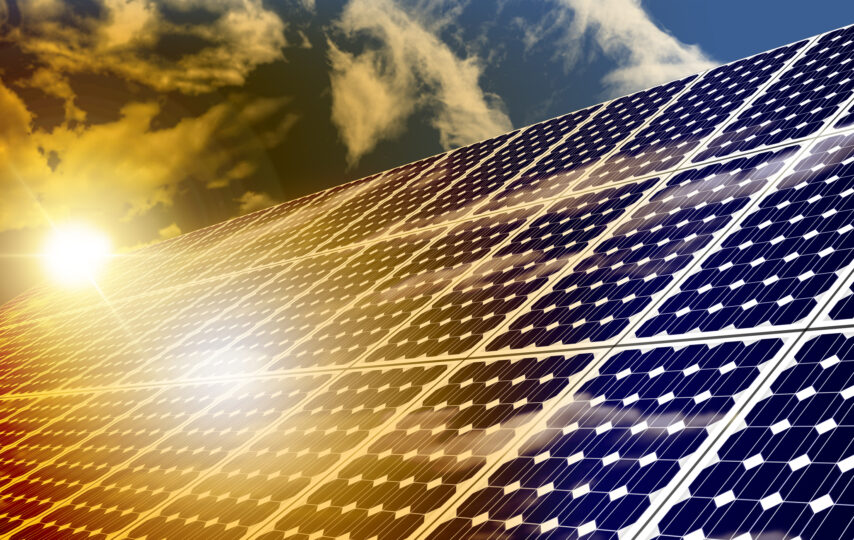Many people express their excitement about solar energy because bifacial solar modules show promise to enhance operational efficiency. The dual sides of these panels absorb sunlight which leads to enhanced power generation potential. Bifacial modules show inconsistent performance results because they fail to reach their expected bifacial ratio standards. The bifacial ratio holds significant importance because it establishes the amount of energy which modules can generate through their rear aspects.
This blog will discuss the main causes behind bifacial solar module failures to reach optimal bifacial ratios. The post analyzes both environmental elements and module construction designs and installation practices that impact performance outcomes. The article will provide you with an enhanced understanding of obstacles and their solutions to optimize your solar investment results.
What is a Bifacial Ratio?
The technology of bifacial solar modules enables solar panels to extract power from lighting on their front and rear surfaces. The bifacial ratio tells us about the extra energy production capability from the rear side compared to the front side by solar panels. The bifacial ratio indicates how well the solar panel converts sunlight that comes from both front and rear reflecting surfaces.
The energy output from the rear surface of solar modules increases when their bifacial ratio value improves thus maximizing power generation in sunny regions. Bifacial panels reach superior energy output than monofacial modules because they have dual light-capturing abilities across their front and rear surfaces. The result? Your solar system achieves maximum efficiency and financial savings because of increased energy generation.
Why a High Bifacial Ratio Matters
- Better energy output occurs when modules have excellent bifacial ratios because reflected light creates power from their rear side.
- The energy efficiency of bifacial modules increases when they possess high bifacial ratios because they can capture reflected sunlight from snow and light-colored surfaces.
- The high energy production of bifacial modules decreases electricity bills to the point where their initial investment becomes cost-effective.
A good bifacial ratio can help solar systems reach their full potential, especially in installations where reflection from the ground or other surfaces can be maximized.
Factors Affecting Bifacial Ratio Performance
Achieving a high bifacial ratio isn’t just about the technology; many factors come into play. Environmental conditions, installation methods, and even the choice of materials used in the solar module can all influence how well the rear side of the panel performs.
Environmental and Installation Factors
- Multiple elements apart from technology determine the success of reaching high bifacial ratio performance. The rear side performance of solar panels depends heavily on environmental conditions and installation methods along with materials used in the solar module.
- Bifacial solar module performance through its rear side depends heavily on the installation angle. Bifacial ratio performance increases when solar panels are installed at angles that allow the panels to catch reflected sunlight from the ground.
- A reflective surface beneath the solar panel will result in better efficiency because light will reflect upward toward the module’s rear side.
- The design’s geographical position plays a significant role since it affects the performance. Bifacial panels operate more effectively in sunlit areas having reflective surfaces compared to regions with less reflection and lighter sunlight conditions.
The Role of Solar Module Quality
- Solar Module Supplier Impact: The solar modules you select for purchase determine their overall performance quality. Aiko Solar implements state-of-the-art technology which optimizes their panel design to increase the bifacial ratio efficiency. Better encapsulation methods alongside specific coating techniques increase the amount of sunlight reflected to the rear side which results in optimized energy generation.
- Not every solar supplier provides identical bifacial efficiency performance to customers. The choice of solar module suppliers depends on the technology they implement so research their products carefully.
The balance between these key factors determines how well you achieve a high bifacial ratio performance. The optimized combination of environment factors, proper installation techniques together with reliable solar modules from established suppliers will maximize the performance of bifacial panels.
Common Challenges in Achieving High Bifacial Ratios
Several performance-limiting barriers make it complicated to achieve high bifacial ratio measurements in solar modules. Bifacial solar module performance faces three main challenges stemming from material constraints and environmental elements and geographical locations.
Material and Design Limitations
- The performance of bifacial ratio decreases when the rear panel lacks optimized optimization because insufficient reflected light reaches the cells.
- Bifacial panels lose potential energy generation from their rear side due to materials with excessive light absorption properties.
- The performance of the panel decreases because the rear side module shows deterioration with aging.
Geographical and Environmental Barriers
- There are certain locations with minimal sunlight exposure and high humidity levels that do not allow bifacial modules to gain maximum performance potential.
- The rear side capture of energy decreases when ground areas show low reflectivity or when they contain dark surfaces and dense vegetation.
- The amount of dust and dirt accumulation in dry climates diminishes the efficiency of bifacial panels since it creates solar panel blockage.
Bifacial modules require appropriate selection and installation techniques to overcome their real installation barriers. Leading supplier Aiko Solar along with other companies is actively working on resolving these problems as described in the following section.
How Solar Suppliers Are Addressing These Challenges
Solar suppliers are making significant progress in overcoming the challenges faced by bifacial solar panels, improving their efficiency and performance.
Innovations from Leading Solar Suppliers
- Aiko Solar along with other companies improves their products by implementing advanced materials which enhance the rear-side reflectivity for better energy generation in bifacial panels.
- Special Coatings represent a new solution that enhances light reflection from the rear side to enhance the bifacial ratio.
- Bifacial panel suppliers have modified their designs specifically to enhance light reflection which leads to improved daily performance.
The Future of Bifacial Technology
- Continuous innovation will enhance the efficiency of bifacial modules particularly in demanding conditions.
- Increasing accessibility will be possible because technological advancements will decrease the cost of bifacial panels.
- Solar systems receive better integration of bifacial panels through design updates which improves system performance.
With these advancements, solar suppliers are tackling the barriers that have traditionally limited bifacial performance, bringing more efficient solar solutions to the market.
Answering the Question: Why BC Cannot Achieve a High Bifacial Ratio?
What prevents bifacial cells from reaching high bifacial ratio performance? The key elements that explain the solution remain undisclosed. The process of attaining high bifacial ratios depends on creating precise environmental factors while using proper technological solutions. The maximum performance potential of certain bifacial solar modules remains blocked by material weaknesses together with environmental conditions and installation complexities.
Despite current constraints there exists a realistic path to achieve high bifacial ratios. The solar technology development continues to bring various suppliers such as Aiko Solar closer to solving these challenges. Enhancing solar power efficiency becomes feasible by using better materials and improved designs and optimizing installation methods to maximize the bifacial ratio.
Conclusion
In conclusion, achieving a high bifacial ratio is a challenge, but it’s not an impossible one. By understanding the factors that affect bifacial performance and working with reputable solar suppliers, you can ensure that your solar panels reach their full potential. Whether through selecting the right materials, ensuring proper installation, or choosing high-quality modules, you can make the most of the reflected sunlight and increase energy production.
Bifacial technology presents positive investment prospects to future market participants. The field of solar technology innovation will advance solar suppliers to build better and accessible solutions for all users. Monitor recent advancements at Aiko Solar because they lead the industry in extending bifacial panel capabilities.







